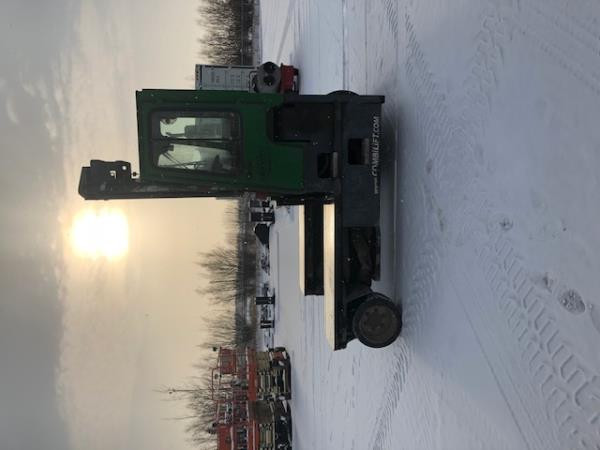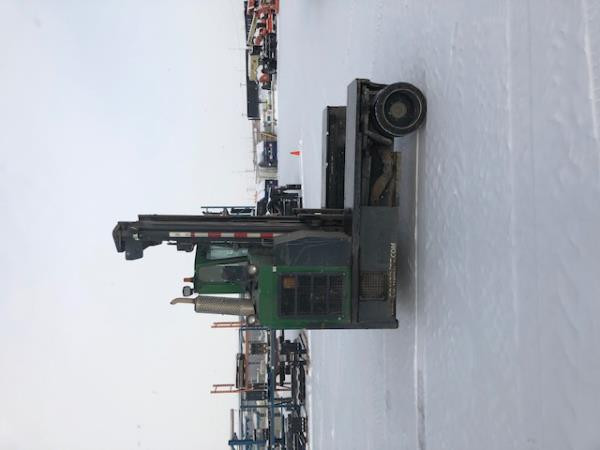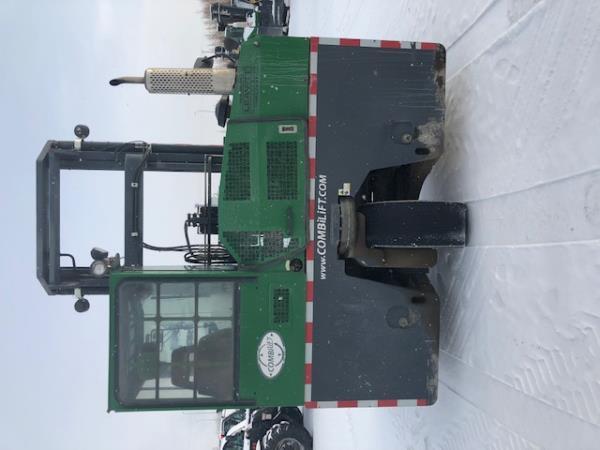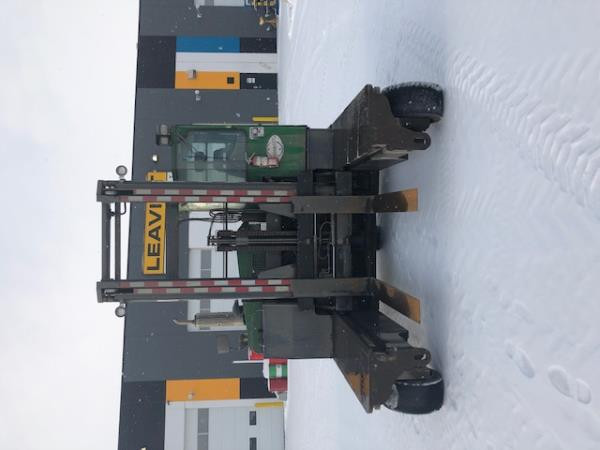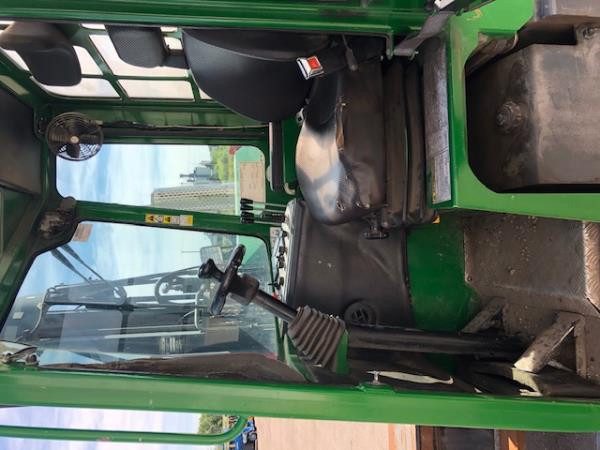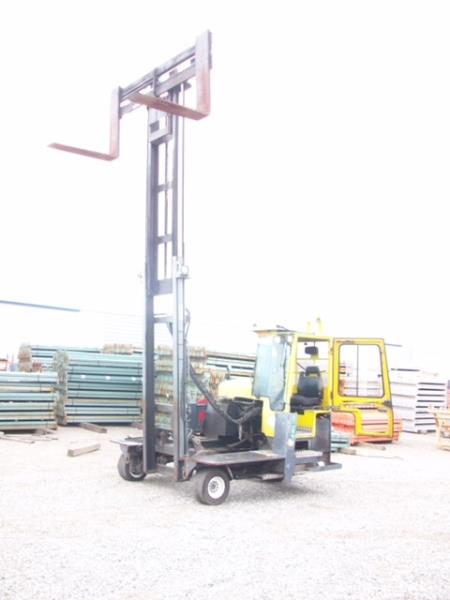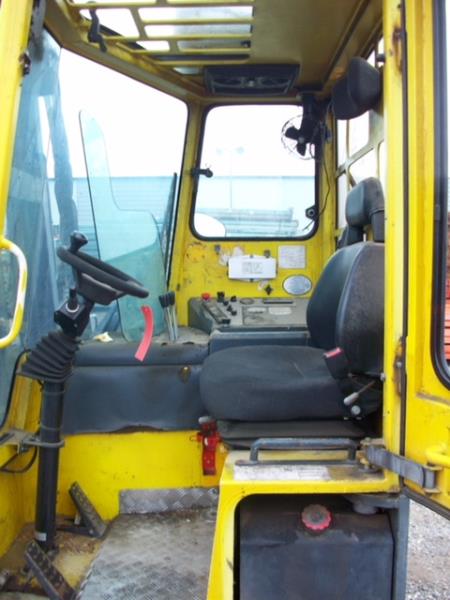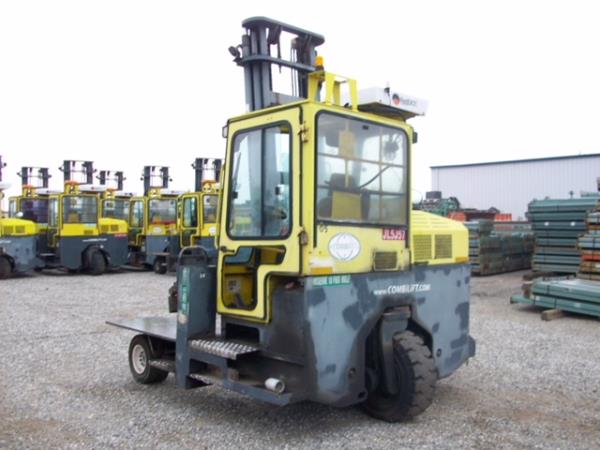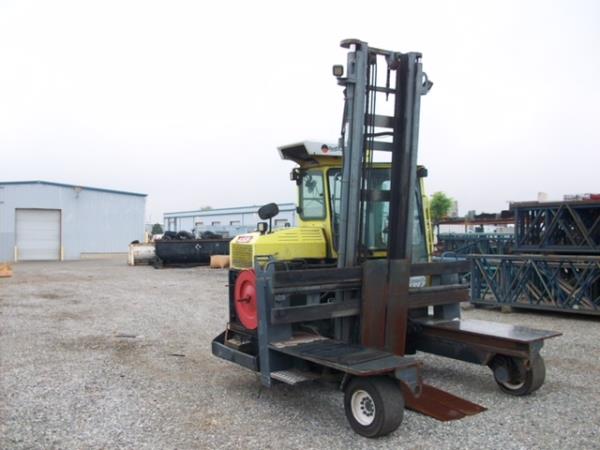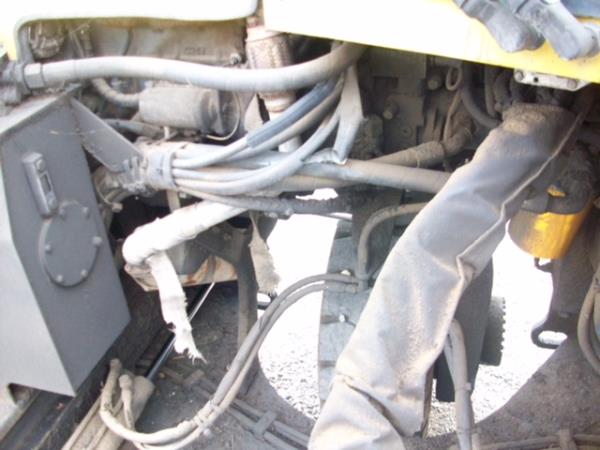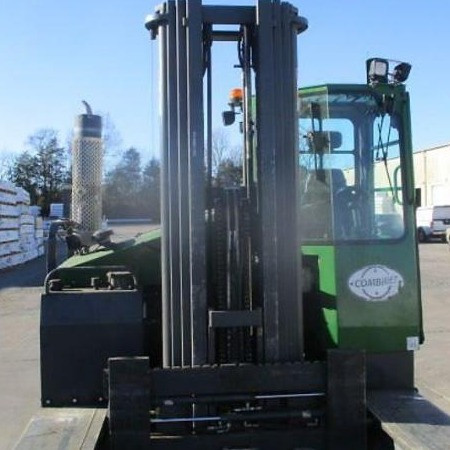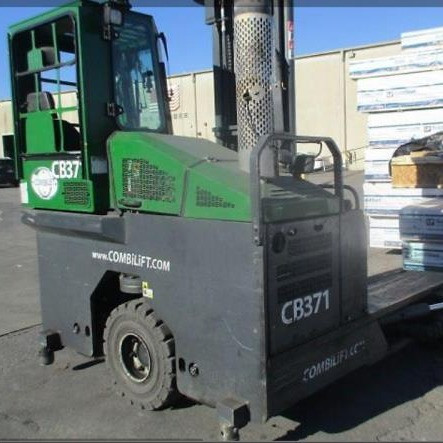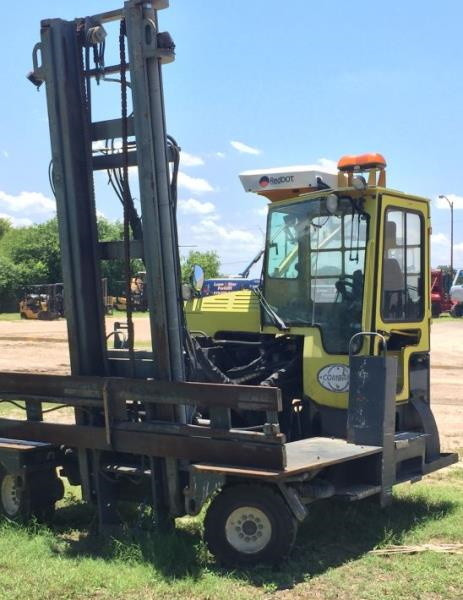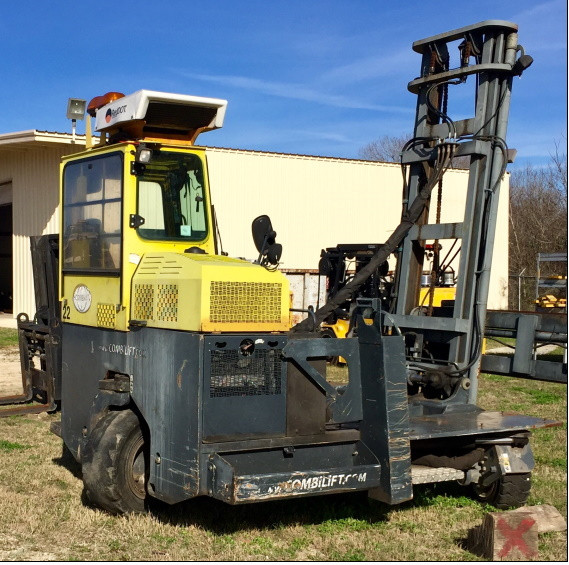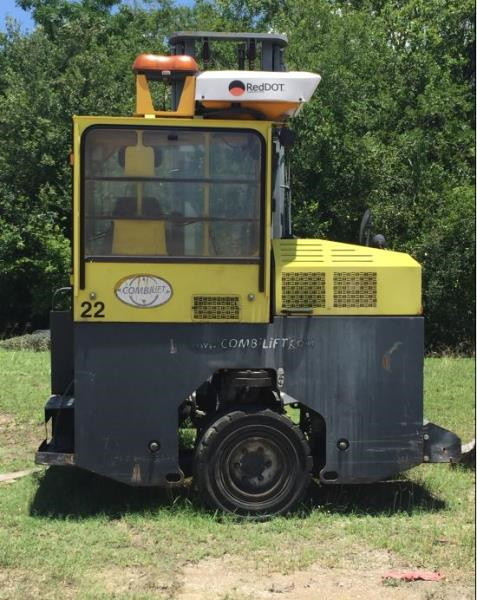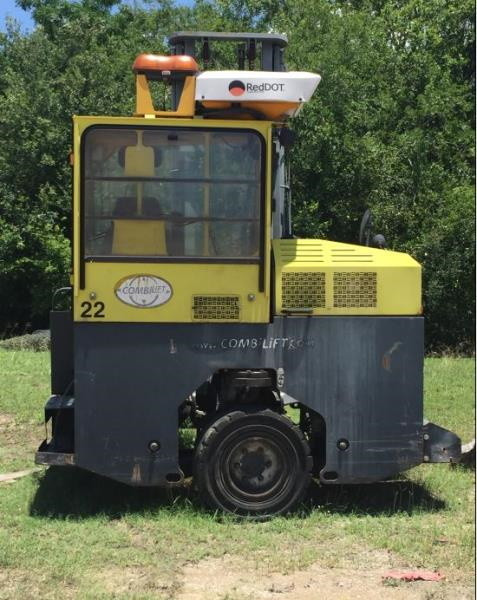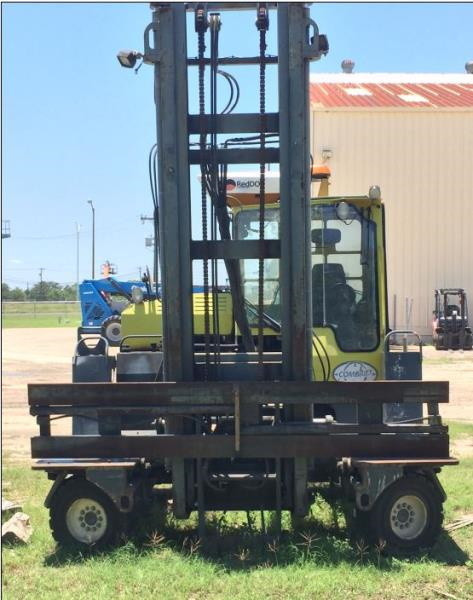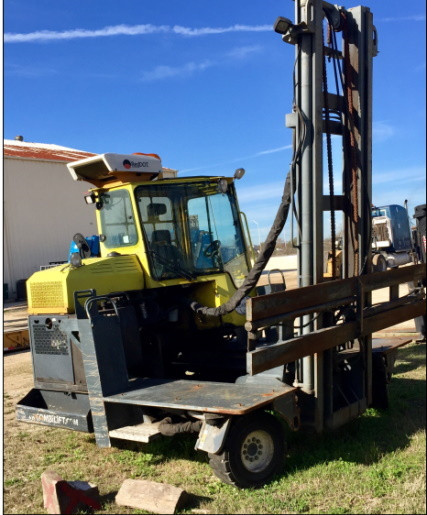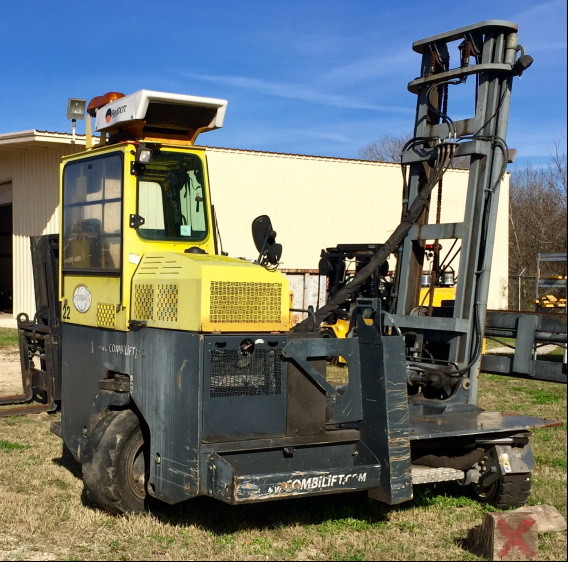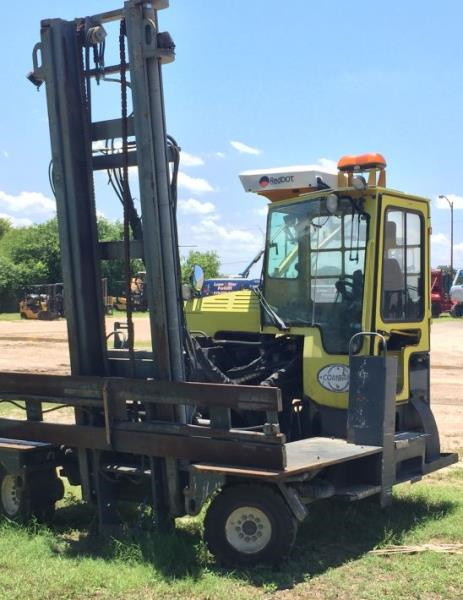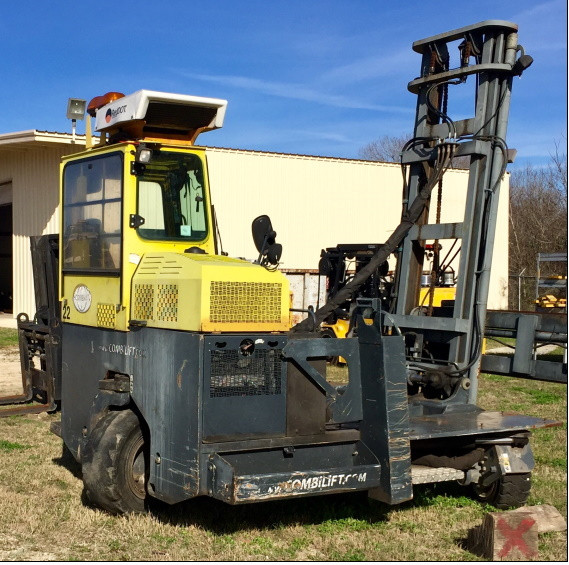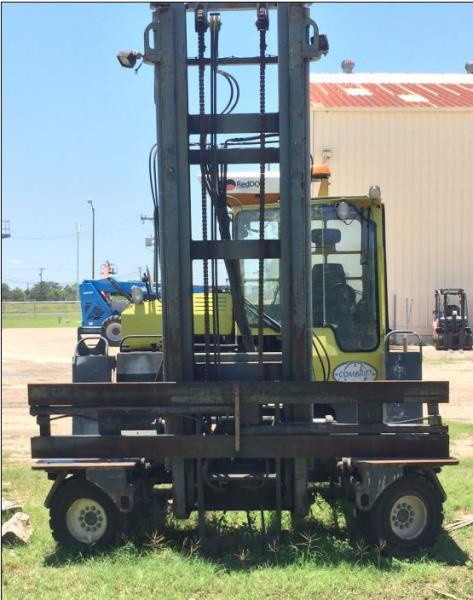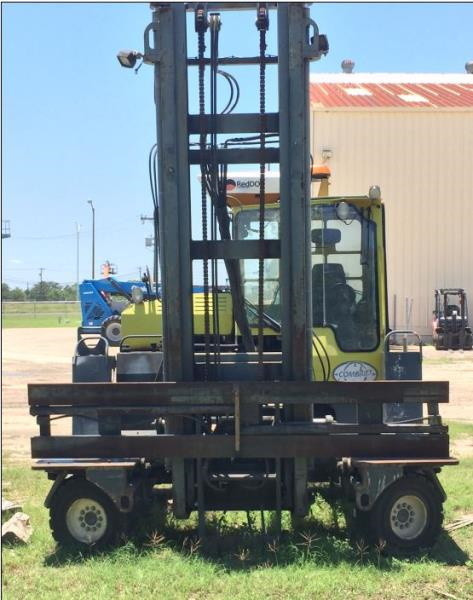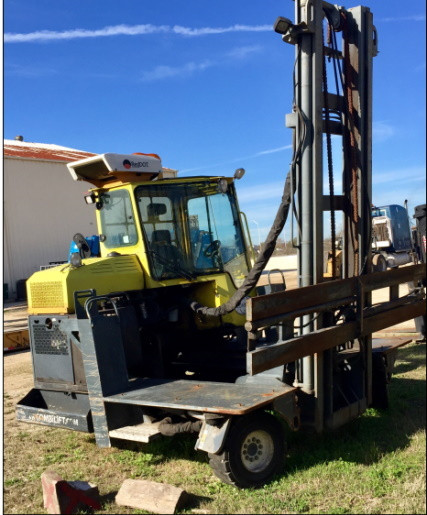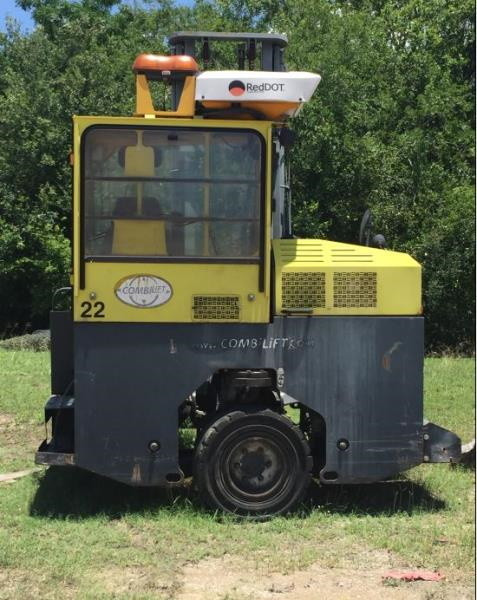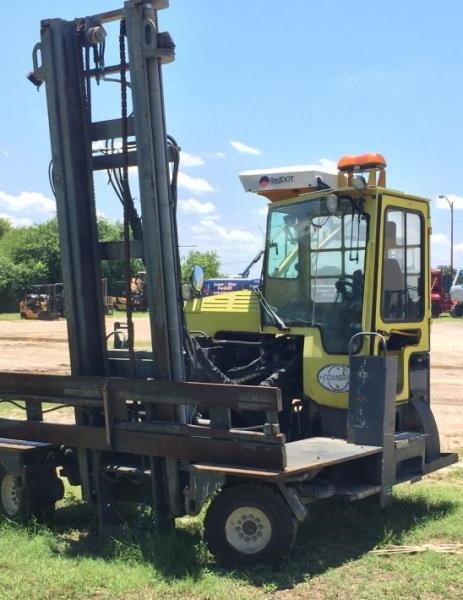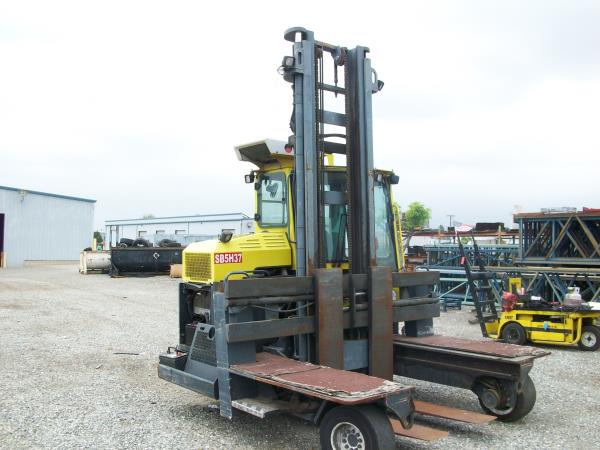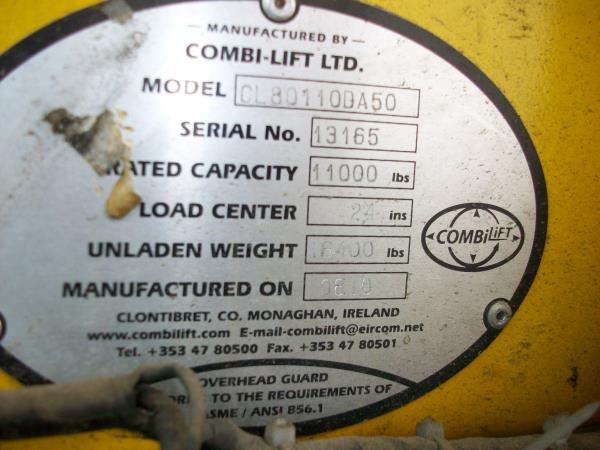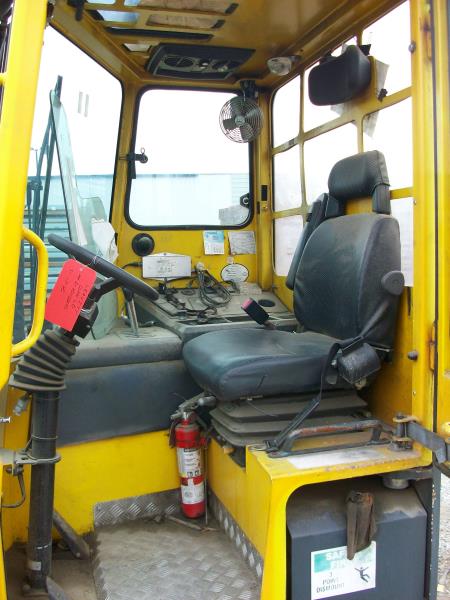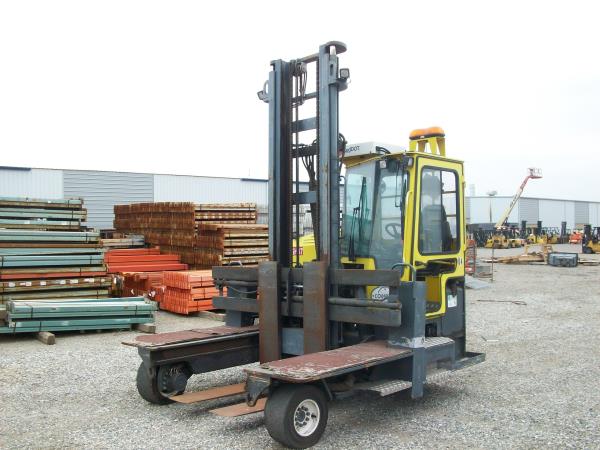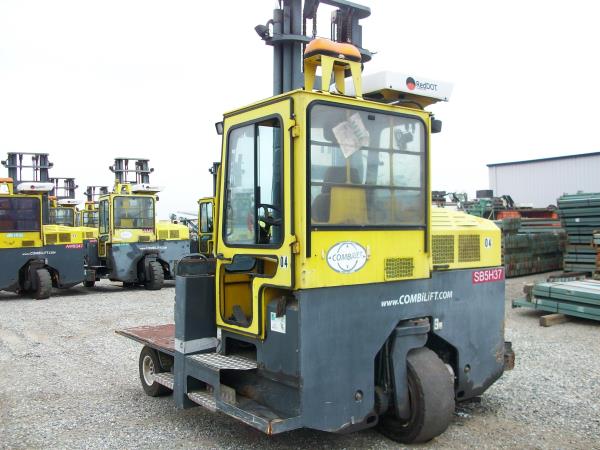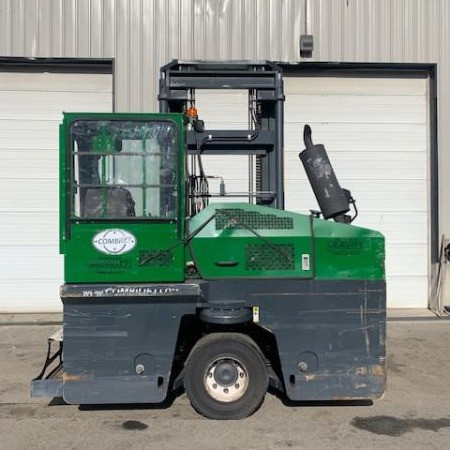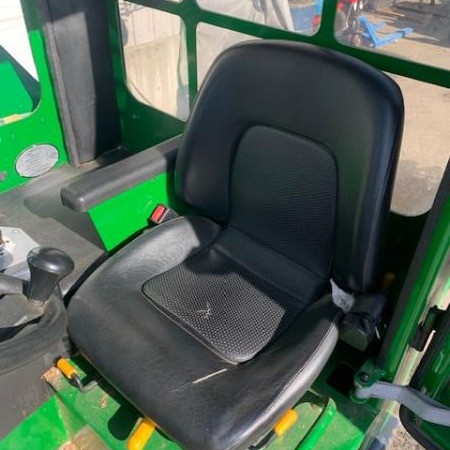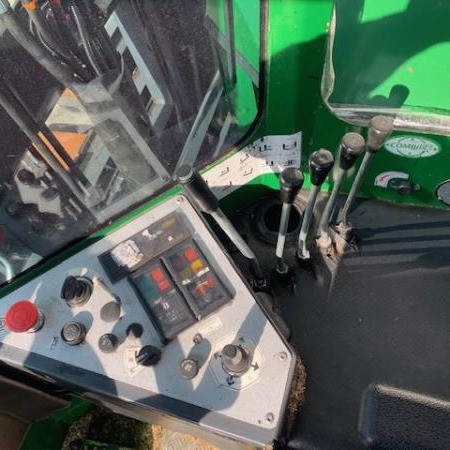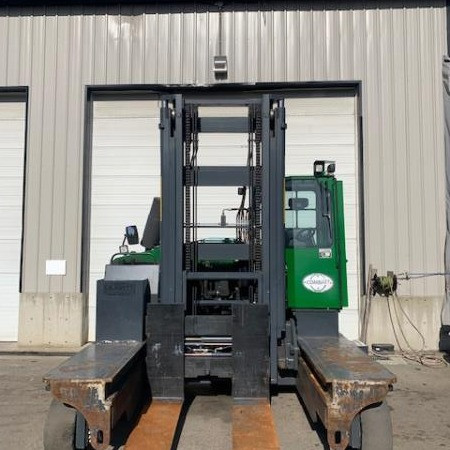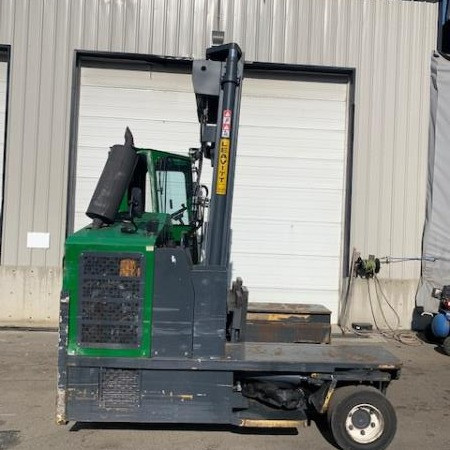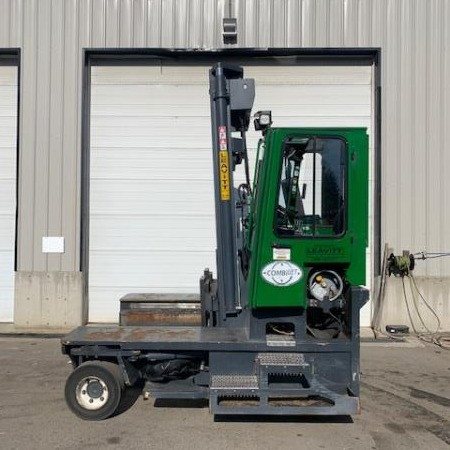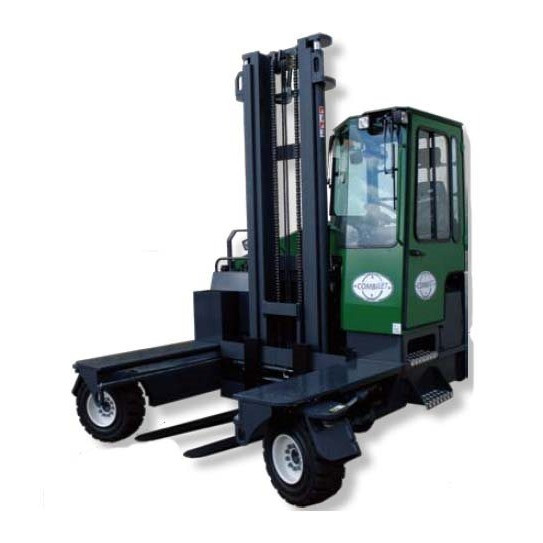Multi Directional Forklift Peoria
Used Side Loader Forklift Peoria - A side loader forklift truck is made for lifting very heavy and long items within the confines the narrow aisles of a warehouse, lumber yard, loading dock or other facility. These forklifts are given their name by the way in which they load, and unload, material - from the side of the forklift rather than from the front, as with standard forklifts.
Benefits of Side Loader Forklifts v Standard Forklifts
Forklifts which operate on the standard counterbalance system may become unstable when loading, transporting or unloading heavy, long loads. The side loader forklift can tackle these awkward loads including timber and extensive pipes with greater stability. Excessive loads including pipes, steel or timber can be handled easier thanks to the design of having the load face the direction of travel. Side loaders gift the operator with an unobstructed view. This is often compromised on standard forklifts with the tines or front-carrying load design.
Side loaders can access narrow aisles and tinier doorways with ease since loads are transported down the side of the machine instead of on the front as with a standard forklift. The load may have to be raised on regular forklifts to travel around obstacles that increase the chances of tipping over. A side loader forklift makes much of that maneuvering unnecessary. Operating in narrow warehouse locations is much safer and more accurate with side loaders.
Many models can lift up to 12K lbs. while traveling at speeds higher than 5 miles an hour. There may be the ability to have travel speeds programmed. This feature allows the operator to match speed to a specific application.
Types of Side Loader Forklifts
Class 2 - Electric Motor Narrow Aisle Trucks
Side loader forklifts often fall under the Class 2 - Electric Motor Narrow Aisle Trucks classification. This classification, as the title description suggests, encompasses forklifts that operate in narrow aisles and are powered by an electrical source. The side loader is useful for handling long and narrow loads in similar locations including lumber, carpet and laminate. These machines are used for feeding machine tools and rack storage. The narrow aisle set up is common in warehouses because it allows for the maximum possible use of a storage area which helps to save on costly square footage as well as travel time between material and loading and unloading areas. Class 2 side loader forklifts have been designed to take up less space by the forklift truck. This design facilitates better speed and efficiency for moving, loading and unloading aisles. Because they are designed primarily for indoor facility use, their electrical power source also means that the harmful emissions that would accumulate from the use of an internal combustion engine are eliminated.
Internal Combustion Engine Side Loader Forklifts
Only side loaders that rely on electricity are in the Class 2 forklift classification. The side loader design is popular for outdoor use as well in places such as timber and lumber yards, steel and pipe producers and many other similar job sites that require long, heavy loads to be transported to and from storage areas, such as racking, or stacking loads in blocks, or offloading from flatbeds. These machines that are used outside have to deal with uneven ground and different temperatures. There are internal combustion models available and they may use pneumatic tires for more stable transport. Side loaders can efficiently load cumbersome items that are long and heavy by securing them in the middle.
Side Loader Forklift Design
The side loader forklift comes in two basic designs:
1. Stand on; and
2. Sit down.
Stand On Side Loader Forklifts
Stand-on side loaders are found in warehouses and interior applications. They feature a small platform generally found in the middle of the unit that is where the operator stands and is surrounded by controls. There are several advantages to this design. Stand-on side loaders don’t have an operator seat, allowing for a more streamlined cab design. A forklift operating with a smaller footprint is excellent for working in high-traffic locations. Especially while operating in reverse, there is greater operator visibility from a standing position. In the stand up position, an operator can turn his whole body to view the rear of the truck when reversing direction whereas in a sit down position the operator must twist his back and neck to get a clear view behind. This is clearly an advantage in terms of safety as well as comfort. Increased operator visibility also helps to decrease damage to products and facilities. Operators on standing forklifts can enter and exit the machine faster than sit-down cab units.
Sit Down Side Loader Forklifts
The sit-down side loader is more popular than standing loaders. Similar to the side loader stand, the sit-down unit features a centrally located cab. Sit-down forklifts have a raised platform and a seat that faces the control panel of the machine. The sit-down units boast better operator comfort. The operator is able to control the forklift from a resting position which decreases operator fatigue which increases productivity.
Customizable Features
Customizable bed lengths are a feature and benefit of side loader forklifts. Popular for heavy and bulky items, the standard side loader has been designed to fit heavy and bulky loads. A sixty-inch extension upwards may be utilized for special jobs. Side loaders need to consider aisle widths and guide rails prior to customization.
These machines can function in a multidirectional manner. Side loaders have crab steering to enable them to have two wheels operate separately from others. Crab steering allows the unit to travel in all four directions by changing the direction of the wheels. The side loader can fit into close quarters and narrow spaces without needing to make huge turns or adjustments. The smaller turning radius helps to avoid damage to items and the building while increasing safety. Efficiency is further achieved by lessening the space and time required to travel around the job.
Several other features on side loader forklifts are often customized based on jobsite application. Tine length, mirrors, lights, lift mast heights and lift capacities are some of the custom options available.
Certain features are also adjustable, allowing for further customization of the side loader for the particular job application. Travel speed, acceleration time, load limits and breaking force can all be set allowing further job efficiency and increased workplace safety.
For all of the above reason, the side loader forklift has become the most popular option for workplaces where space is limited and long loads are involved.
Multi Directional Forklift PDF
Stock Number: 206080 GL
Make: COMBILIFT
Model: C20000
Year: 2011
| Stock Number |
206080 GL |
| Make |
COMBILIFT |
| Model |
C20000 |
| Year |
2011 |
| Category |
Side Loader Forklift |
Stock Number: EQU008127 GL
Make: Combilift
Model: CL80110DA50
Year: 2008
| Stock Number |
EQU008127 GL |
| Make |
Combilift |
| Model |
CL80110DA50 |
| Year |
2008 |
| Category |
Side Loader |
Stock Number: EQU020234 GL
Make: COMBILIFT
Model: C8000
Year: 2015
| Stock Number |
EQU020234 GL |
| Make |
COMBILIFT |
| Model |
C8000 |
| Year |
2015 |
| Category |
Side Loader Forklift |
Stock Number: EQU008136 GL
Make: Combilift
Model: C12000
Year: 2008
| Stock Number |
EQU008136 GL |
| Make |
Combilift |
| Model |
C12000 |
| Year |
2008 |
| Category |
Side Loader Forklift |
Stock Number: EQU008107 GL
Make: Combilift
Model: C12000
Year: 2008
| Stock Number |
EQU008107 GL |
| Make |
Combilift |
| Model |
C12000 |
| Year |
2008 |
| Category |
Side Loader |
Stock Number: EQU008139 GL
Make: Combilift
Model: C12000
Year: 2008
| Stock Number |
EQU008139 GL |
| Make |
Combilift |
| Model |
C12000 |
| Year |
2008 |
| Category |
Side Loader |
Stock Number: EQU008115 GL
Make: Combilift
Model: C12000
Year: 2008
| Stock Number |
EQU008115 GL |
| Make |
Combilift |
| Model |
C12000 |
| Year |
2008 |
| Category |
Side Loader Forklift |
Stock Number: EQU008120 GL
Make: Combilift
Model: CL80110DA50
Year: 2008
| Stock Number |
EQU008120 GL |
| Make |
Combilift |
| Model |
CL80110DA50 |
| Year |
2008 |
| Category |
Side Loader |
Stock Number: 208235 GL
Make: COMBILIFT
Model: C17300
Year: 2014
| Stock Number |
208235 GL |
| Make |
COMBILIFT |
| Model |
C17300 |
| Year |
2014 |
| Category |
Side Loader Forklift |
Stock Number: EQC015972 GL
Make: Combilift
Model: CB6000
Year: 2018
| Stock Number |
EQC015972 GL |
| Make |
Combilift |
| Model |
CB6000 |
| Year |
2018 |
| Category |
Side Loader Forklift |
Stock Number: EQC004281 GL
Make: Combilift
Model: C10000XL
Year: 2017
| Stock Number |
EQC004281 GL |
| Make |
Combilift |
| Model |
C10000XL |
| Year |
2017 |
| Category |
Side Loader Forklift |
Stock Number: EQU008128 GL
Make: Combilift
Model: CL80110DA50
Year: 2008
| Stock Number |
EQU008128 GL |
| Make |
Combilift |
| Model |
CL80110DA50 |
| Year |
2008 |
| Category |
Side Loader |
Stock Number: EQC007681 GL
Make: Combilift
Model: C10000XL
Year: 2017
| Stock Number |
EQC007681 GL |
| Make |
Combilift |
| Model |
C10000XL |
| Year |
2017 |
| Category |
Side Loader Forklift |


